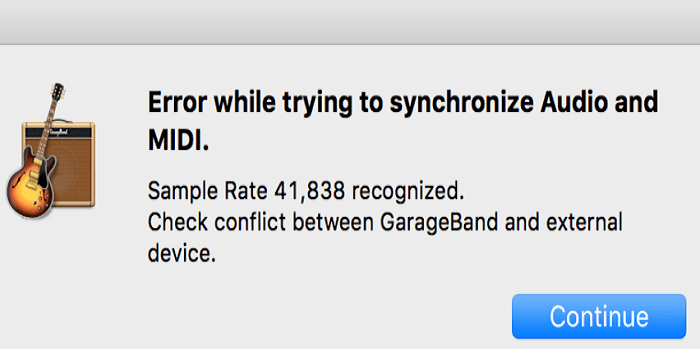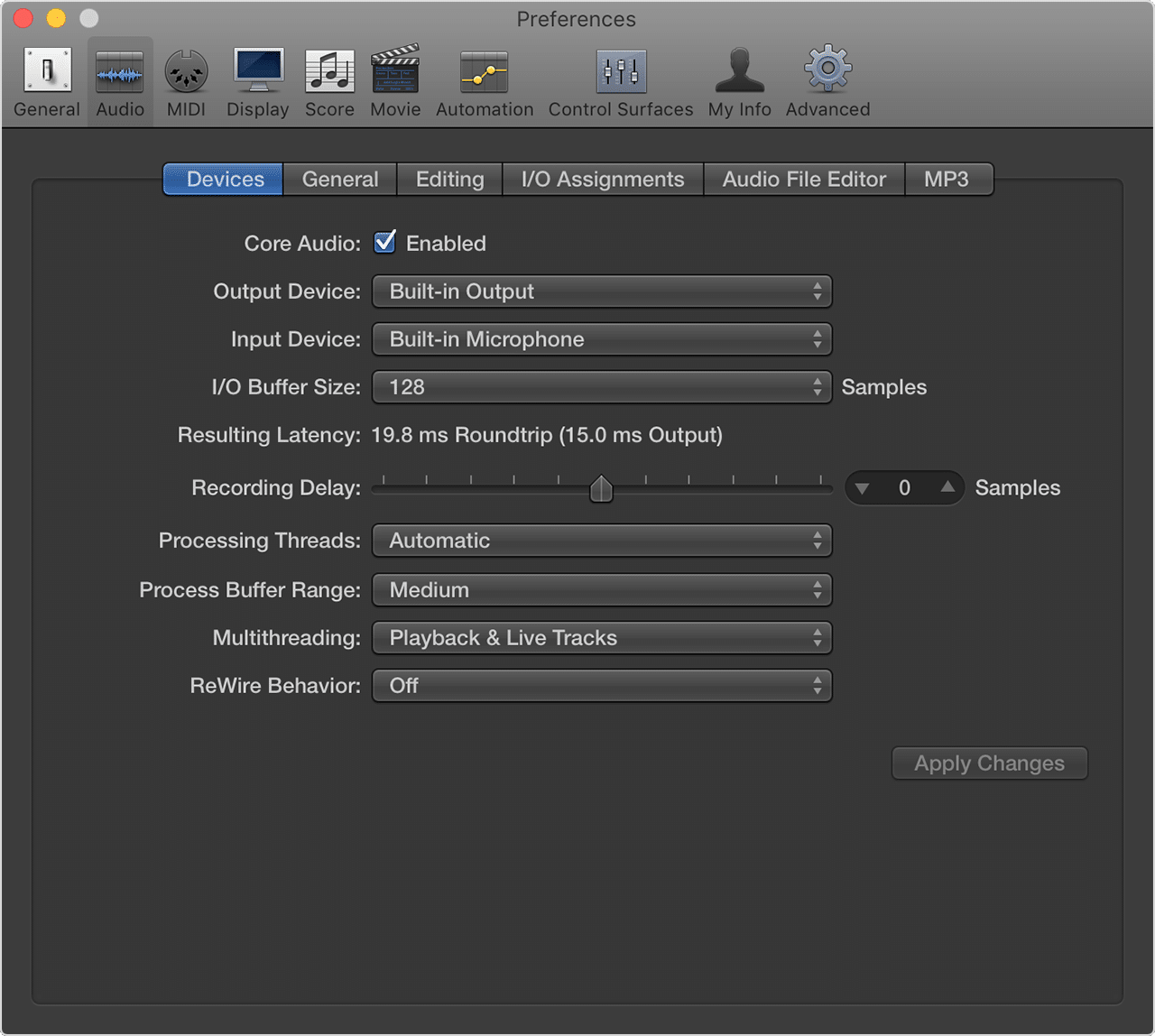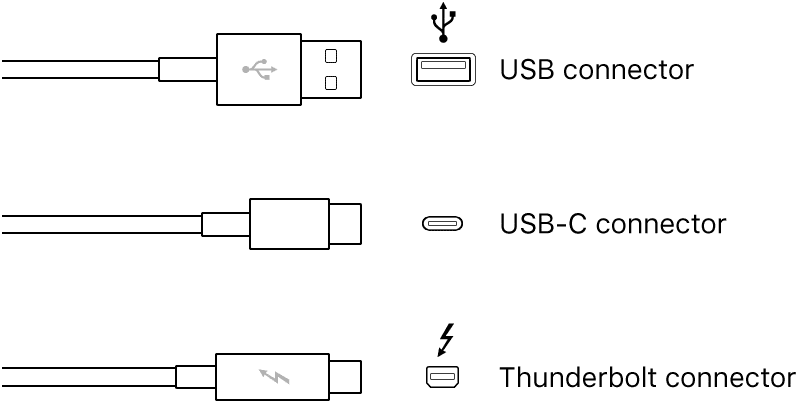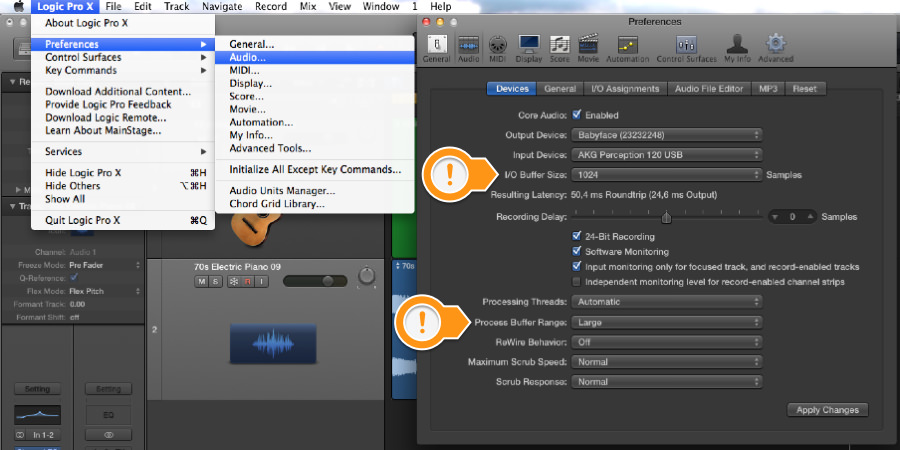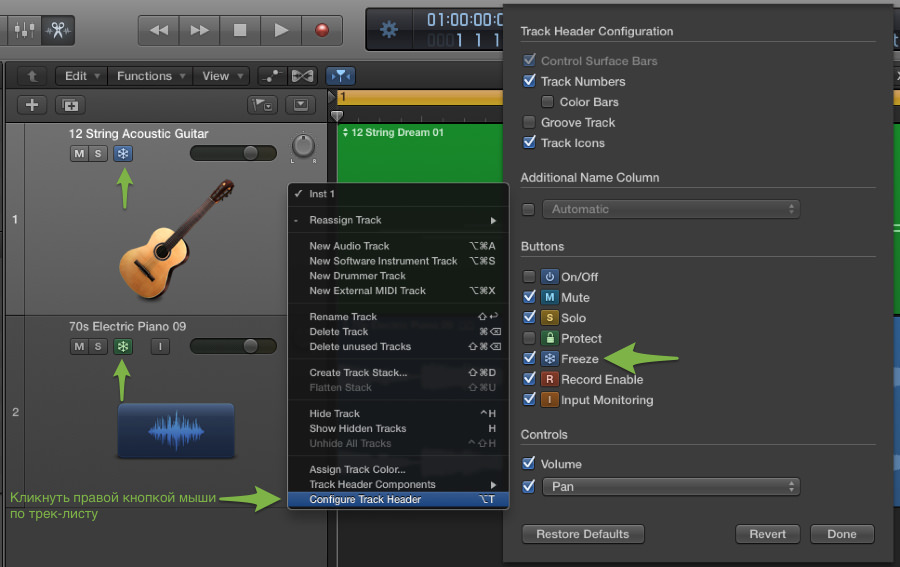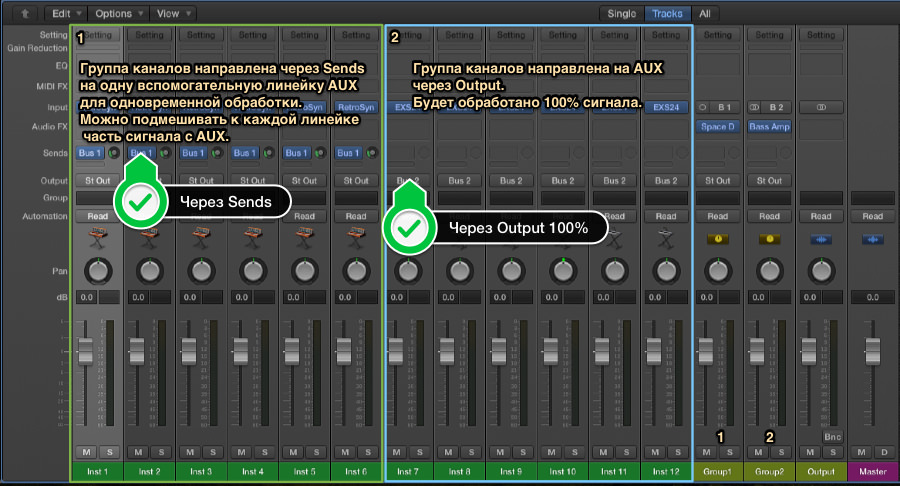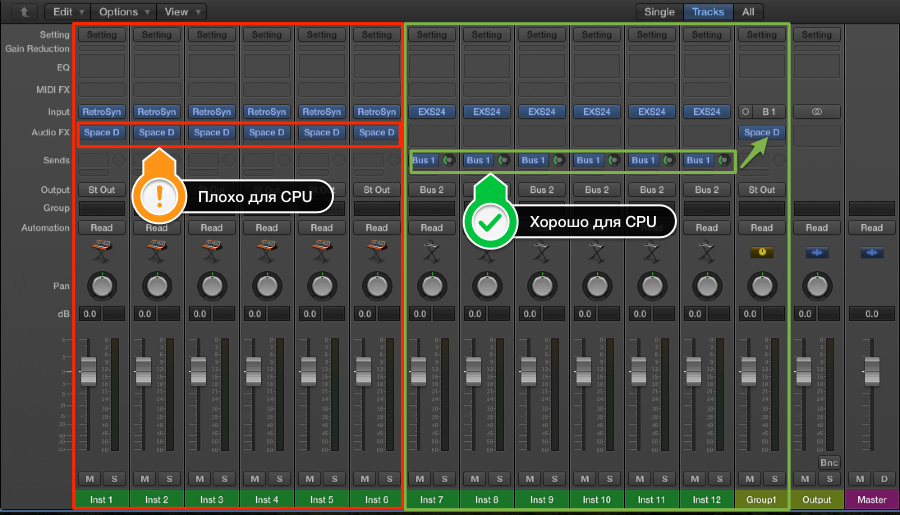Статья для тех, кому ненавистны error окна лоджика про «системную перегрузку» и про «ошибку синхронизации аудио и миди»
Были замечены и намотали нервов в Logic Pro 9.1.7 на Mac OS X Lion 10.7.4 а также в Logic Pro 9.0.0 на Mac OS X Snow Leopard 10.6.5
Logic Pro:
System Overload.
The audio engine was not able to process all required data in time.
(-10011)
Error while trying to synchronize Audio and MIDI.
Sample Rate xxxxx recognized.
Check conflict between Logic Pro and external device.
Поиски в хелпе дал следующее: оверлоад возникает, когда много дорожек, а также много эффектов на них, а синхронизация теряется, когда при включении воспроизведения или записи хайлайтом выбрана дорожка с миди-инструментом. Да, вкратце – это всё, что написано в ресурсах. Из полезных советов было приведены, например, такие:
The Bounce function allows the entire instrument track to be recorded as an audio file. This bounced audio file can then be used (as an audio region) on a standard audio track, allowing you to reassign the available processing power for further software instrument tracks. For more details, see “Bouncing Your Project.”
You can also make use of the Freeze function to capture the output of a software instrument track, again saving processing power. For details, see “Freezing Tracks in the Arrange Area.”
Эти советы – про синхронизацию. Про оверлоад – советов вообще нет, кроме как «снижения уровня обработок». Почему в хелпе невозможно найти объяснения (хотя бы объяснения) к стандартным окнам ошибок в лоджике – мне неизвестно. Про полезность советов я умолчу – достаточно упомянуть хотя бы о том, что оба окошка я получал в проверочном проекте с одной пустой аудиодорожкой без эффектов, миди-барабанчиков и стандартным синтезатором (пусть и мощным по ресурсам) из стандартной коллекции лоджика; проект был лишен шин и посылов, а на мастере висел только Фапфильтр Про-Л. Сначала я конечно грешил на него – но быстро перестал, когда обнаружил, что даже этот практически пустой проект грузит ядра процессора практически с любым эффектом на мастере, так что не в фапфильтре дело, ребята.
Да и конфигурация, не самая слабая из современных, работали и послабее машины:
Название модели: iMac
Идентификатор модели: iMac12,2
Имя процессора: Intel Core i5
Скорость процессора: 3,1 ГГц
Количество процессоров: 1
Общее количество ядер: 4
Кэш 2-го уровня (в каждом ядре): 256 КБ
Кэш L3: 6 МБ
Память: 4 ГБ
А вот и проект, который почти сразу вешает систему, все инструменты и плагины с инит-патчами, т.е. не самыми ресурсоемкими настройками, обратите внимание на загрузку CPU:
Грустно, правда?
Нужно сказать, что эта проблема в моей практике уже возникала годом раньше – в прошлый раз решения найдено не было, хотя интернет был перерыт весь, что называется, и потрачено много времени на поиск, чтение, пробы и разочарования – решения всё же не было нигде. Частично помогали некоторые ухищрения, например записывать миди-партии (да и аудиотреки, кажется, тоже) только когда на мастере ничего не висит и в проекте нет посылов и шин, а прослушивать в нагрузке можно было только при выбранной пустой аудиодорожке, специально созданной, чтобы можно было хотя бы запустить проект. Потом эта проблема испарилась одновременно с изменением условий работы и я о ней забыл, до последнего случая.
Но сейчас то – я уже чуть более продвинутый пользователь мака. Проблеме – война )
Сначала была исследована проблема live input’а – по той причине, что ужасные зависания на ней отображались очень охотно, и простор для исследования был неисчерпаемый. Долго искал, чем можно уменьшить перегрузку – помогали только отключения жрущих плагинов на мастере (FF Pro-L) но не сильно, а прочие стандартные ухищрения с задержкой не помогали вовсе, т.к. при лив-инпуте задержка отключается, или, во всяком случае, работает иначе.
Полазил в настройках миди на маке – там оказывается можно много чего наворотить, но это другая история, к текущей отношения уже не имеет. В общем случае – настройки миди в MAC OSX на данную ситуацию никак не влияют, хотя некоторые подозрения всё ещё имеются, но решена проблема была в итоге иначе.
В течение двух дней поисков и отладок в консоли и системном мониторе, было установлено, что лоджик достаточно много обращается к сети. Время возникновение проблемы по памяти было восстановлено с точностью до минут, и по логам системы было выявлено, что проблемы начались сразу же, как только я деактивировал службу интернета. Интернет был просто неоплачен, но пару дней можно было прожить и без него, поэтому я просто деактивировал интернет-службу в настройках системы, чтобы её не вызывали то и дело другие программы, вываливая при этом окошко о невозможности подключения:
Это нескрываемое окошко, по разным причинам, тоже достаточно ненавистно владельцам маков. Сразу скажу, что службу я именно деактивировал, а не изменял настройки в ней, для того, чтобы парой кликов быстро её включить, когда потребуется, не копаясь в настройках.
Так вот лоджик совершенно не поддержал такого решения, и стал забрызгивать экран моей слюной и окошками про оверлоад и синхронизацию, конечно, ничего не говоря про то, что ему требуется коннект с чем-то там где-то там в сети. Так как лоджик отлично работал и без интернета (но с этим ненавистным окошком про невозможное подключение) – решение появилось в голове моментально.
Решение: добавить новую интернет службу, на компьютере с отсутствующим интернетом. Было создано Ethernet подключение с айпи адресом 1.0.0.0
И всё, лоджик – запел. Даже на самых загруженных проектах.
Наверняка, эта проблема не самая распространенная, понятно, что сейчас очень много компьютеров с лоджиком подключены к сети, к локальной или к интернету, где лоджик может пинговать сколько ему надо, но наверняка есть и такие, кто сетью не пользуется. Вот именно они и пишут подавляющее большинство грустных опусов на форумах об этих двух окошках – потому как эти окошки, ребята, это что-то нереальное, пока не столкнешься – даже и не поверишь, и возникают они как по мановению волшебной палочки, и причины их неясны, а после их возникновения работать дальше совершенно невозможно. Потому то эти форумные сообщения часто в слезах, соплях и негодовании.
UPD: дополнение, касающееся работы в операционных системах OSX Lion 10.7 и OSX Mountain Lion 10.8 — для их нормальной работы с лоджиком требуется наличие более 4 Гб оперативной памяти. С 4 Гб система работает, но ресурсы расходуются очень быстро, и проекты нагруженные чуть сильнее будут тормозить: оперативки не будет хватать на UI, Memory Server различных сэмплеров/ромплееров, и тд тп, при этом лоджик будет отдавать стандартное System Overload, ничего не говоря про память. Просто знайте это
После установки дополнительной памяти улучшения заметны сразу, сейчас у меня 12 Гб, полет нормальный.
Содержание
- If you see an audio and MIDI sync alert in Logic Pro
- Check sample rate settings
- Check the sample rate on your external interface
- Check the sample rate in Logic Pro
- Check clock settings on digital devices
- Check aggregate device setup
- Increase the I/O buffer size
- Freeze tracks
- Check sync settings
- When syncing other applications or devices to Logic Pro
- When syncing Logic Pro to other applications or devices
- Bypass Reaktor Ensemble
- Use built-in audio
- Решение ошибок Error while trying to synchronize Audio and MIDI и System Overload (1 онлайн
- spred
- Logic Pro (X) Error While trying to Synchronize Audio and Midi
- thmusic7
- Atlas
If you see an audio and MIDI sync alert in Logic Pro
Learn what to do if you see “Error while trying to synchronize Audio and MIDI” in Logic Pro.
This alert appears when the sample rate of an incoming audio signal doesn’t match the project’s sample rate or if the sample rate fluctuates. It appears most often when using an external audio interface, an external sync device, or plug-ins.
Follow the recommendations in this article to keep the alert from interrupting your session. After each recommendation, try playing your project to see if the alert still appears. If the alert still appears, try the next recommendation until the alert no longer appears.
Check sample rate settings
When using an external audio interface with Logic Pro, the sample rate for your interface should adjust automatically to match the sample rate of your project. Sometimes, however, sample rate settings might not match. Check to make sure the sample rate settings match.
Check the sample rate on your external interface
Most external audio interfaces have an application (usually accessible in System Preferences or in the Applications folder) that you can use to view and change hardware settings, including the device’s sample rate. See the documentation for your device for more information.
Check the sample rate in Logic Pro
To check your project’s sample rate, choose File > Project Settings > Audio. If your project’s sample rate doesn’t match your interface’s sample rate, select the correct sample rate from the Sample Rate pop-up menu.
If your project’s sample rate does match your interface’s sample rate, select a different sample rate from the Sample Rate pop-up menu, then set it back to the original sample rate.
Check clock settings on digital devices
If you’re using an external audio interface with another digital device connected to it, make sure only one interface is the main clock source. See the documentation for your interface for more information.
Check aggregate device setup
If you’re using multiple external audio interfaces combined as an aggregate device, make sure to do the following:
- Connect the devices together via word clock, SPDIF, Lightpipe, or AES/EBU.
- Designate one device as the main clock source.
See the documentation for your interfaces for more information.
Increase the I/O buffer size
To increase the I/O buffer size in Logic Pro, choose Logic Pro > Preferences > Audio, then choose a larger size from the I/O Buffer Size pop-up menu.
Freeze tracks
Check sync settings
Check sync settings if you’re syncing other applications or devices to Logic Pro, or if you’re syncing Logic Pro to another application or device.
When syncing other applications or devices to Logic Pro
When syncing another application or device that can generate MIDI timecode (MTC) or MIDI clock to Logic Pro, turn off “Auto-enable external sync and Tap Tempo.” Choose File > Project Settings > Synchronization, then deselect “Auto-enable external sync and Tap Tempo.”
When syncing Logic Pro to other applications or devices
When syncing Logic Pro to another application or device using MTC, do the following:
- Make sure the application or device generating MTC is not also generating MIDI clock. See the documentation for your application or device for more information.
- With your Logic Pro project open choose File> Project Settings > Synchronization, click the Audio tab, then select External or Free from the Core Audio pop-up menu.
Bypass Reaktor Ensemble
If your project includes a software instrument track with a Reaktor Ensemble that syncs its LFO to the song tempo, try bypassing or removing the plug-in from the track.
Use built-in audio
If you’re using an external audio interface, try using the built-in audio on your Mac instead of the interface.
- Unplug your external audio interface from your Mac.
- Open Logic Pro, then choose Logic Pro > Preferences > Audio.
- Choose Built-in Output from the Output Device pop-up menu.
- Choose Built-in Microphone (or Built-in Input, depending on your computer) from the Input Device pop-up menu.
If alerts don’t appear, you might need to update or service your audio interface. Contact the manufacturer for support.
Information about products not manufactured by Apple, or independent websites not controlled or tested by Apple, is provided without recommendation or endorsement. Apple assumes no responsibility with regard to the selection, performance, or use of third-party websites or products. Apple makes no representations regarding third-party website accuracy or reliability. Contact the vendor for additional information.
Источник
Решение ошибок Error while trying to synchronize Audio and MIDI и System Overload (1 онлайн
spred
Соус и жизнь
Статья для тех, кому ненавистны error окна лоджика про «системную перегрузку» и про «ошибку синхронизации аудио и миди»
Были замечены и намотали нервов в Logic Pro 9.1.7 на Mac OS X Lion 10.7.4 а также в Logic Pro 9.0.0 на Mac OS X Snow Leopard 10.6.5
Logic Pro:
System Overload.
The audio engine was not able to process all required data in time.
(-10011)
Error while trying to synchronize Audio and MIDI.
Sample Rate xxxxx recognized.
Check conflict between Logic Pro and external device.
Поиски в хелпе дал следующее: оверлоад возникает, когда много дорожек, а также много эффектов на них, а синхронизация теряется, когда при включении воспроизведения или записи хайлайтом выбрана дорожка с миди-инструментом. Да, вкратце – это всё, что написано в ресурсах. Из полезных советов было приведены, например, такие:
The Bounce function allows the entire instrument track to be recorded as an audio file. This bounced audio file can then be used (as an audio region) on a standard audio track, allowing you to reassign the available processing power for further software instrument tracks. For more details, see “Bouncing Your Project.”
You can also make use of the Freeze function to capture the output of a software instrument track, again saving processing power. For details, see “Freezing Tracks in the Arrange Area.”
Эти советы – про синхронизацию. Про оверлоад – советов вообще нет, кроме как «снижения уровня обработок». Почему в хелпе невозможно найти объяснения (хотя бы объяснения) к стандартным окнам ошибок в лоджике – мне неизвестно. Про полезность советов я умолчу – достаточно упомянуть хотя бы о том, что оба окошка я получал в проверочном проекте с одной пустой аудиодорожкой без эффектов, миди-барабанчиков и стандартным синтезатором (пусть и мощным по ресурсам) из стандартной коллекции лоджика; проект был лишен шин и посылов, а на мастере висел только Фапфильтр Про-Л. Сначала я конечно грешил на него – но быстро перестал, когда обнаружил, что даже этот практически пустой проект грузит ядра процессора практически с любым эффектом на мастере, так что не в фапфильтре дело, ребята.
Да и конфигурация, не самая слабая из современных, работали и послабее машины:
Название модели: iMac
Идентификатор модели: iMac12,2
Имя процессора: Intel Core i5
Скорость процессора: 3,1 ГГц
Количество процессоров: 1
Общее количество ядер: 4
Кэш 2-го уровня (в каждом ядре): 256 КБ
Кэш L3: 6 МБ
Память: 4 ГБ
А вот и проект, который почти сразу вешает систему, все инструменты и плагины с инит-патчами, т.е. не самыми ресурсоемкими настройками, обратите внимание на загрузку CPU:
Грустно, правда?
Нужно сказать, что эта проблема в моей практике уже возникала годом раньше – в прошлый раз решения найдено не было, хотя интернет был перерыт весь, что называется, и потрачено много времени на поиск, чтение, пробы и разочарования – решения всё же не было нигде. Частично помогали некоторые ухищрения, например записывать миди-партии (да и аудиотреки, кажется, тоже) только когда на мастере ничего не висит и в проекте нет посылов и шин, а прослушивать в нагрузке можно было только при выбранной пустой аудиодорожке, специально созданной, чтобы можно было хотя бы запустить проект. Потом эта проблема испарилась одновременно с изменением условий работы и я о ней забыл, до последнего случая.
Но сейчас то – я уже чуть более продвинутый пользователь мака. Проблеме – война )
Сначала была исследована проблема live input’а – по той причине, что ужасные зависания на ней отображались очень охотно, и простор для исследования был неисчерпаемый. Долго искал, чем можно уменьшить перегрузку – помогали только отключения жрущих плагинов на мастере (FF Pro-L) но не сильно, а прочие стандартные ухищрения с задержкой не помогали вовсе, т.к. при лив-инпуте задержка отключается, или, во всяком случае, работает иначе.
Полазил в настройках миди на маке – там оказывается можно много чего наворотить, но это другая история, к текущей отношения уже не имеет. В общем случае – настройки миди в MAC OSX на данную ситуацию никак не влияют, хотя некоторые подозрения всё ещё имеются, но решена проблема была в итоге иначе.
В течение двух дней поисков и отладок в консоли и системном мониторе, было установлено, что лоджик достаточно много обращается к сети. Время возникновение проблемы по памяти было восстановлено с точностью до минут, и по логам системы было выявлено, что проблемы начались сразу же, как только я деактивировал службу интернета. Интернет был просто неоплачен, но пару дней можно было прожить и без него, поэтому я просто деактивировал интернет-службу в настройках системы, чтобы её не вызывали то и дело другие программы, вываливая при этом окошко о невозможности подключения:
Это нескрываемое окошко, по разным причинам, тоже достаточно ненавистно владельцам маков. Сразу скажу, что службу я именно деактивировал, а не изменял настройки в ней, для того, чтобы парой кликов быстро её включить, когда потребуется, не копаясь в настройках.
Так вот лоджик совершенно не поддержал такого решения, и стал забрызгивать экран моей слюной и окошками про оверлоад и синхронизацию, конечно, ничего не говоря про то, что ему требуется коннект с чем-то там где-то там в сети. Так как лоджик отлично работал и без интернета (но с этим ненавистным окошком про невозможное подключение) – решение появилось в голове моментально.
Решение: добавить новую интернет службу, на компьютере с отсутствующим интернетом. Было создано Ethernet подключение с айпи адресом 1.0.0.0
И всё, лоджик – запел. Даже на самых загруженных проектах.
Наверняка, эта проблема не самая распространенная, понятно, что сейчас очень много компьютеров с лоджиком подключены к сети, к локальной или к интернету, где лоджик может пинговать сколько ему надо, но наверняка есть и такие, кто сетью не пользуется. Вот именно они и пишут подавляющее большинство грустных опусов на форумах об этих двух окошках – потому как эти окошки, ребята, это что-то нереальное, пока не столкнешься – даже и не поверишь, и возникают они как по мановению волшебной палочки, и причины их неясны, а после их возникновения работать дальше совершенно невозможно. Потому то эти форумные сообщения часто в слезах, соплях и негодовании.
UPD: дополнение, касающееся работы в операционных системах OSX Lion 10.7 и OSX Mountain Lion 10.8 — для их нормальной работы с лоджиком требуется наличие более 4 Гб оперативной памяти. С 4 Гб система работает, но ресурсы расходуются очень быстро, и проекты нагруженные чуть сильнее будут тормозить: оперативки не будет хватать на UI, Memory Server различных сэмплеров/ромплееров, и тд тп, при этом лоджик будет отдавать стандартное System Overload, ничего не говоря про память. Просто знайте это
После установки дополнительной памяти улучшения заметны сразу, сейчас у меня 12 Гб, полет нормальный.
Источник
Logic Pro (X) Error While trying to Synchronize Audio and Midi
thmusic7
Logician
Hello everyone. I have a late 2010 iMac i3 upgraded to Mavericks 10.9.4.
For the last two years I have been getting this error when Using Logic Pro 9, recently upgraded to Logic X:
«Error While trying to Synchronize Audio and Midi» When ever I get this message, I get a bunch of popping and clicking noises and my COMPUTER RUNS SLOW, even when I try to look at youtube or listen to iTunes. It tells me my sample rate is recognized at 40973 and to check conflict between Logic and external device. Don’t know how to do that.
Some of the plugins I have are Trillian Bass, Kontakt 5, Focusrite mixers, Bass Station, Addictive Keys, etc. I also have a scarlett 2i2 audio interface, but it even does it when the interface isn’t plugged in.
I know every little about audio DRIVERS, and the Coreaudio whatchamajigger. I even tried to get help from the so called apple «genies» but to know avail. Does anyone have a «Simple yet effective solution to what I can do about this. Even if its not so simple, please be as plain as possible. I love music but I’m no tech head. Thanks.
Atlas
Logician
The basic issue when this happens is that Logic is either not getting audio data at the sample rate it expects, or the sample rate is fluctuating. Depending on the specific cause, here are some tips for resolving this:
In most cases, Logic can set the sample rate for the audio interface, but sometimes this is not possible. Check the sample rate for your audio audio interface and make sure it matches Logic’s setting. If the settings match, try changing Logic’s sample rate to a different setting and then back again.
If you have any devices digitally connected to the audio interface, make sure that only one device is set to be the master clock.
If you have combined multiple audio interfaces by configuring an Aggregate Device in Audio/MIDI Setup, make sure that the devices are digitally connected, and that only one device is configured as master clock.
If you are using Word Clock to sync multiple devices, be sure that all Word Clock connections are properly terminated.
Choose Audio > Audio Hardware & Drivers and try increasing the I/O Buffer size.
Try freezing tracks that use plug-ins that put significant load on the processor.
If you are running other software or hardware that can send MTC or MIDI clock, but intend for Logic to be the sync master, turn off Auto Sync In for Logic, to prevent Logic from receiving sync externally. The Auto Sync In setting can be accessed by click-holding the sync button on Logic’s Transport.
If you are syncing Logic to another application or device via MTC, make sure that both Logic and the sync master are set to the same format. Make sure that Logic is not receiving both MIDI Clock and MTC. Also, configure the Audio Sync setting to «External or Free» in case the system is resolved to external Word Clock.
If you using a Reactor ensemble that syncs its LFO to the song tempo, try bypassing or removing the plug-in.
If none of the above helps, try switching to Built-in Audio. If this resolves the problem, check for updated drivers for your audio and MIDI interfaces.
Make sure that your audio card drivers are up to date.
Restart Logic after updating those.
If that still not work try to deselect the core audio input/output devices (in the audio preferences), restart Logic and then select your audio input/output devices (in the audio preferences) and restart Logic again. If that fails to solve your issue, quit Logic and delete your pref files and repeat the deselect/reselect input/output devices (in the audio preferences) procedure.
Источник
Contents
- 1 Garageband and Logic Pro – Background Check
- 2 Why Are You Getting this Error?
- 3 Error While Trying to Synchronize Audio and MIDI – Solved!
- 3.1 Solution#1: Check Mic if It’s Recognized
- 3.2 Solution#2: Change the USB Cable and Disconnect Other USB Devices
- 3.3 Solution#3: Check the Sample Rate – The Common Cause
- 3.3.1 Checking Sample Rate in Your Audio Interface
- 3.3.2 Check (and Change) Sample Rate in Logic Pro
- 3.3.3 Check (and Change) Sample Rate in GarageBand
- 3.4 Solution#4: Kill unused apps and freeze unused tracks
- 3.5 Solution#5: Check Sync Settings
- 3.5.1 Syncing Logic Pro to other Apps/Devices
- 3.5.2 Syncing other Apps/Devices to Logic Pro
- 4 Conclusion
Error while trying to synchronize audio and midi in Apple’s DAWs is usually caused by the fluctuation in sample rates and reconfiguring the sample rates is the best fix. Depending on the situation, it’s wise to check the sync settings, show down unused apps, assess the microphone, switch the USB cable, … To be able to dismiss this error and use Apple’s DAWs to your liking, continue reading.
Garageband and Logic Pro – Background Check
You might be wondering why we mentioned both Garageband and Logic Pro. This is because some users of this software get the same errors for the reasons that will be revealed below. You see, both these DAWs are developed by Apple, which may be bundled with your Macintosh computers and/or your iOS devices.
Garageband is a free music-making DAW that can be used both on your iOS device and computer. The Logic Pro, on the other hand, is a premium DAW and MIDI sequencer that is primarily used on desktops only. It costs around $200, with all the professional features from FL Studio and Pro Tools combined. This means Logic Pro is a powerful tool that is designed for serious music producers and audio editors.
You may have understood by now, why Garageband and Logic Pro share the same error. Likewise, it’s also logical that the reason why this problem occurs, and the solutions will work for both DAWs. You may check this error as displayed in Garageband and Logic Pro.
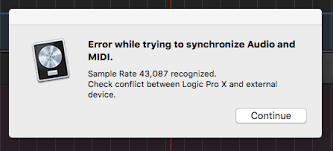
Why Are You Getting this Error?
There are three major reasons why you encounter “Error while trying to synchronize audio and midi” in these Apple DAWs. They are as follows:
- Fluctuating sample rates from your audio interface. Synchronization in Logic Pro and in Garageband means that the sample rate of your external interface should match with the sample rate of the project you are working on. You must check the sample rate of your interface and the software to see if this is the cause of the problem.
- Audio interface is used by other software, and you have a lot of apps running in the background. If you have tons of resource-hungry apps running on your device, chances are, the software will fail. It’s not just particular to Logic Pro or to Garageband, but if your app’s processing requirement exceeds the capacity of your device, it’ll definitely cause some error.
- Check USB Connection. Bad connectivity may also cause the problem. You can easily solve this by using a different USB cable.
Error While Trying to Synchronize Audio and MIDI – Solved!
Although the following solutions are proven to solve this error, it’s important to do troubleshooting logically. This may lessen the work to be done, and it could hasten the process of totally getting rid of the problem.
Solution#1: Check Mic if It’s Recognized
If you are using a mic, particularly, Blue Yeti mic, it could be that it’s too old for the version of the software that you are using. Try to use a new mic and see if it’s recognized by your device. Relaunch your project and see if you won’t encounter the problem anymore.
Solution#2: Change the USB Cable and Disconnect Other USB Devices
When the cable between your interface and your device is very long, an error may occur. So, only use a cable with a length of 1.80 meters or shorter. If you are already using a shorter cable, try to replace it with a new (functional) one. Lastly, you can also remove other USB devices to check if this has caused the error.
Solution#3: Check the Sample Rate – The Common Cause
Just to reiterate, when the sample rate in your audio interface and your software don’t match, there’s a big chance that it won’t sync. So, follow the instructions below.
Checking Sample Rate in Your Audio Interface
Access the System Preferences of your external audio interface and check on the Hardware Settings. From there, you can find information about the sample rate. (If you don’t know where to find the app for your audio device, you can access the Applications Folder in your Mac.)
Check (and Change) Sample Rate in Logic Pro
Open Logic Pro and go check the sample rate of your project. Go to File>Project Settings>Audio. You can see the sample rate of your project. If this doesn’t match the sample rate of your interface, you can adjust from here. Correct the sample rate by selecting the sample rate of your audio interface from the Sample Rate pop-up menu.
On the other hand, if it matches, just try to select random sample rates and then, set it back to the original value. This is just to refresh, and it works for some users.
Check (and Change) Sample Rate in GarageBand
Especially when you are using a microphone, you have to use the right settings. Go to Applications>Utilities to launch the Audio MIDI Setup utility. Here you can check the sample rate. If you find that it’s set to 2 channels, change with a single channel. The single-channel option is for monophonic instruments, while two channels are for stereo instruments. Simply click the Format dropdown button to change the setting.
Solution#4: Kill unused apps and freeze unused tracks
Check the Logic’s CPU meter when the project is being played. (And, then, you bumped into the error.) Now, try to close all background apps you have and freeze all tracks that aren’t in use at the moment. Reload the same project and monitor the CPU on its playback. If there’s a significant decrease in CPU usage, killing unused apps could help.
In addition, you may also increase the I/O buffer size. In your Logic Pro, go to Preferences>Audio. From the I/O Buffer Size pop-up menu choose the largest value.
Solution#5: Check Sync Settings
You might also want to check the sync settings of your Logic Pro. It could be that it’s synced with other devices and vice versa.
Syncing Logic Pro to other Apps/Devices
Turn off auto-sync to other apps that can generate MIDI timecode (MTC) or MIDI clock. To do this go to Project Settings>Synchronization and untick Auto-Enable External Sync and Tap Tempo.
Syncing other Apps/Devices to Logic Pro
Go to Project Settings>Synchronization>Audio, then choose External or Free from the Core Audio pop-up menu. Prior to doing so, make sure that that app synced with your Logic Pro isn’t generating a MIDI clock, which can be checked in your app’s documentation.
Conclusion
The error while trying to synchronize audio and MIDI in your Garageband or Logic Pro can easily be solved if you know the reason why it’s happening. Although the error isn’t something crucial, it’s still very annoying and needs to be addressed immediately. Therefore, this article covers all the possible reasons and solutions so that you will definitely get rid of them – forever.
Hi music fan! I am Jeff. Hope that you enjoy some stuff I shared here in my personal blog.
About myself, Currently I am in charging as Artist Manager/Music Supervisor at 72 Music Management. I did managed album to Grammy Award in 2017 with 7 Nominations from 2014-2020 and had the opportunities to work with : A.J. Croce, Blind Boys of Alabama, Bobby Rush, Dom Flemons, Dustbowl Revival, Sarah Grace
Governor of the Memphis Chapter of The Recording Academy is one of a award that I am lucky to achieved. My profile: Linkedin.
При работе в Logic Pro X периодически появляется предупреждение об ошибках: Logic Pro X: System Overload, Disk is too slow, Error while trying to synchronise Audio and MIDI. -10010, -10011, что делать?
Logic Pro не всегда точно определяет причину возникновения ошибки, но старается максимально точно сообщить об источнике ее возникновения. Ошибка -10010 Disk is too slow (Слишком медленный диск), ошибка -10011 System Overload… (Система перегружена. Аудио-движок не смог обработать все необходимые данные в срок), Error while trying to synchronise Audio and MIDI и другие похожие ошибки чаще всего возникают из-за нехватки мощности одного из аппаратных ресурсов вашей системы. Что можно сделать?
Вам необходимо оптимизировать производительность вашего оборудования. При работе в Logic одновременно может быть задействовано несколько компонентов: оперативная память (RAM), жесткий диск (HD), центральный процессор (CPU). Каждый из этих трех компонентов отвечает за определенную обработку данных.
RAM. Когда вы загружаете проект Logic Pro, то весь проект загружается в RAM вместе со всеми семплами, импульсными откликами таких плагинов, как Space Designer, петлями Apple Loops, аудиофайлами с активным режимом Follow Tempo, а также со всеми плагинами используемыми в проекте. RAM влияет на количество Apple Loops, семплов, аудиофайлов в режиме Follow Tempo и семплерных инструментов, которое может использоваться в одном проекте.
HD. Жесткий диск влияет на то, как много семплов и аудио треков вы можете использовать одновременно. Скорость считывания и записи данных на HD — это один из наиболее важных параметров жесткого диска. Чем эта скорость выше, тем лучше производительность. Учитывайте также и тот момент, что обычный HD не может одновременно считывать и записывать данные. Он может либо считывать либо записывать.
CPU. Мощность центрального процессора влияет на объем суммарных вычислений в режиме реального времени. Все плагины, программные инструменты (синтезаторы) требуют пересчета в режиме реального времени. Некоторые плагины, например, Space Designer требуют очень много вычислительных ресурсов. Поэтому больше количество ресурсоемких плагинов существенно влияет на загрузку CPU. Чаще всего это относится к FX плагинам обработки сигнала.
Когда один из трех компонентов системы перегружается вы можете слышать артефакты (“хруст”) при воспроизведении, может останавливаться воспроизведение и появляться всплывающие окна с различными предупреждениями об ошибках. Для того, чтобы их избежать необходимо правильно распределять ресурсы системы и настраивать Logic в соответствии с выполняемыми задачами. Вот несколько рекомендаций по оптимизации производительности:
1. Увеличьте задержку. После того, как вы записали все “живые” партии при помощи, например, MIDI — клавиатуры или микрофона, иными словами, закончили всю работу над записью аранжировки где для вас очень важным моментом была маленькая “задержка” сигнала и перешли к редактированию или сведению поменяйте значение I/O Buffer Size на 1024, а значение Buffer Range на Large.
2. Используйте функцию Freeze. Заморозьте часть треков, которые уже записаны и на которых находятся ресурсоемкие плагины, например, Space Designer или “тяжелые” инструменты, активировав режим Freeze. Не переживайте за качество “замороженных” треков. Logic Pro прописывает “замороженные” аудио с разрядностью 32-bit с плавающей запятой и с максимально возможным внутренним разрешением аудио движка, а качество “замороженного” трека в точности соответствует качеству “незамороженного” трека.
3. Делайте групповые каналы. Не используйте ресурсоемкие плагины, например, Space Designer с одинаковыми настройками на всех канальных линейках где нужен этот эффект. Объедините несколько канальных линеек в группу и примените плагин сразу к нескольким трекам.
4. Не используйте нелицензионный “ломанный” софт. Некоторые “ломанные” плагины могут вызвать очень серьезные ошибки в работе Logic Pro и даже привести к тому, что после сохранения проект будет невозможно открыть или к внезапным закрытиям приложения без возможности сохранения.
5. Используйте внешний высокоскоростной HD для хранения и считывания библиотеки Apple Loops и других аудио библиотек для распределения нагрузки на HD.
© LogicProHelp.RU
Поделиться материалом с друзьями или забрать себе на стену:
Hi all!
I’ve decided to add my question to this thread since I’m having a similar issue. I hope that’s okay.
I’m doing this online music production course this month, and the current task we are working on is recording samples into our DAW (hitting pots and pans, objects around the house, etc) in order to create our drum hits, sampled instruments, and so forth.
I recently bought my Focusrite Scarlett 4i4 and a Rode NT1-A mic. Plugged it in, started recording, and everything went smoothly.
I chopped up all the different samples, threw a few into Quick Sampler, made a DMD track with some of the samples becoming drum hits, and also have a few instances of Flex Time on 4 tracks because I stretched a few samples to fit into the BPM and rhythm of the song I’m working on.
The project is literally bare bones right now. Aside from the snippets of audio in their own audio tracks, I have 4 or 5 Software Instrument tracks with 2 bars of MIDI. The plug-ins I used on those Software Instrument tracks are minimal too (Compressor, OTT, Creative Intent’s Tantrum distortion plug in, plus 2 aux tracks of Chromaverb).
I’ve had my Scarlett and my Arturia MiniLab MKII connected via USB. Since both have USB-A connections and my 2019 MacBook has USB-C, I have a USB-C Adapter/Hub by a company called Satechi, that I plug both the keyboard and A/I into, with nothing else plugged in. Here’s the exact model I’m using:
Apologies for the size of the image, not sure how to reduce the size here.
For the past few weeks, I’ve had them plugged in, all was working perfectly. Last night, I thought: «Maybe I should get a USB-C to USB-C cord for the Focusrite, so that both the keyboard and A/I are not relying on this adaptor for juice.»
I bought some cheap cable, but it said it had 10Gbps, so I thought that would work fine.
Suddenly, last night, in the process of work, I got this error that has been mentioned previously in this thread:
As you can see, one core is overloaded. And the sample rate error it shows me changes every time I try to playback the project.
Buffer rate has always been set to 1024, and I only reduced it when I first opened the project and recorded my sounds through the Rode mic.
This error above occurred when I had clicked on my DMD track, and tried to play my sampled kick using the pads of the MiniLab MKII.
When I did that, the sound in Logic started skipping, sounded like the A/I was about to implode or something.
Of course, I immediately thought the new cord was the culprit. I closed Logic, shut down the computer, plugged the Scarlett as I had it before, through the USB-C hub, restarted and went back into the project.
Since then, I cannot get the project to play without this error, no matter what I do.
Here is an overview of the project. Nothing is even playing here. I stopped the track, and it’s still overloading. You can see the audio tracks from the audio recording I did, from track 21 — onwards. Only a few have some Flex Time added, but no plug-ins. They’re just short audio files cut up from the larger recording. Only the first rows of tracks have any proper editing, instruments, etc.
A closer look with the error during playback:
I went online and searched through various threads on here and in other message boards.
Many people attributed this to the project having too many CPU heavy plug-ins and its overloading the project. Others have accused the audio interfaces.
I’ve been troubleshooting for several hours now. I’ve turned off all plug-ins.
I’ve reinstalled the drivers for the Scarlett and the MiniLab, made sure the Scarlett was working in the same sample rate.
I’ve reset SMC, made sure all programs were closed except for Logic.
Just now, I unplugged everything, and simply played the project through my MacBook speakers. Same thing. So it’s not the Focusrite it seems.
I also noticed that after the error, if I just let it sit there for a bit, the core will slowly reduce back to normal (after about a minute or so of waiting without playback).
Then I’ll play the track, and everything will be perfectly normal again.
That is, until I’ll click on my DMD track (all plug-ins still off!), and try to trigger the drum samples again through Musical Typing. Right away, the core flares up and the error occurs:
So, I’m trying to write this all out here to see if someone has any troubleshooting tips or solutions for me.
I have my project due Sunday evening, so it’s really frustrating to not be able to work on it right now.
My only thought is… Has the process of me manipulating the sounds I recorded caused some issues with the sample rate?
Could the files have become corrupt, or have been recorded incorrectly, even though the Focusrite shows that I was recording in 44.1 kHz?
Is there a way that I can check these sounds in the DMD to make sure that all of them are the proper sample rate?
And please let me know if there’s any other information you all need to have a better understanding of what’s going on.
I just don’t know what happened suddenly to cause everything to change suddenly.
Yesterday, I even cut down a few track ideas. So the day before, I had more plug-ins and ideas occurring without even a sign of any overloading or sample rate issues.
Many thanks in advance!
-
#2
The basic issue when this happens is that Logic is either not getting audio data at the sample rate it expects, or the sample rate is fluctuating. Depending on the specific cause, here are some tips for resolving this:
In most cases, Logic can set the sample rate for the audio interface, but sometimes this is not possible. Check the sample rate for your audio audio interface and make sure it matches Logic’s setting. If the settings match, try changing Logic’s sample rate to a different setting and then back again.
If you have any devices digitally connected to the audio interface, make sure that only one device is set to be the master clock.
If you have combined multiple audio interfaces by configuring an Aggregate Device in Audio/MIDI Setup, make sure that the devices are digitally connected, and that only one device is configured as master clock.
If you are using Word Clock to sync multiple devices, be sure that all Word Clock connections are properly terminated.
Choose Audio > Audio Hardware & Drivers and try increasing the I/O Buffer size.
Try freezing tracks that use plug-ins that put significant load on the processor.
If you are running other software or hardware that can send MTC or MIDI clock, but intend for Logic to be the sync master, turn off Auto Sync In for Logic, to prevent Logic from receiving sync externally. The Auto Sync In setting can be accessed by click-holding the sync button on Logic’s Transport.
If you are syncing Logic to another application or device via MTC, make sure that both Logic and the sync master are set to the same format. Make sure that Logic is not receiving both MIDI Clock and MTC. Also, configure the Audio Sync setting to «External or Free» in case the system is resolved to external Word Clock.
If you using a Reactor ensemble that syncs its LFO to the song tempo, try bypassing or removing the plug-in.
If none of the above helps, try switching to Built-in Audio. If this resolves the problem, check for updated drivers for your audio and MIDI interfaces.
Make sure that your audio card drivers are up to date.
Restart Logic after updating those.
If that still not work try to deselect the core audio input/output devices (in the audio preferences), restart Logic and then select your audio input/output devices (in the audio preferences) and restart Logic again. If that fails to solve your issue, quit Logic and delete your pref files and repeat the deselect/reselect input/output devices (in the audio preferences) procedure.
-
#3
Thanks for your advice. I increased the buffer size as you suggested and not one time did I get popping and clicking noise. Thanks again for your advice. The only issues I have now are, that sometimes, I get an overload error causing my playback to stop. Also, a track will out of the blue, stop producing sound. I usually switch to another track and then back to original track, and that fixes the issue momentarily. Any advice?
-
#4
There is probably a discrepancy between what your project(s) are demanding CPU-wise and what your computer can actualy deliver…
-
#5
Last edited by a moderator: Jan 30, 2018
-
#6
There is probably a discrepancy between what your project(s) are demanding CPU-wise and what your computer can actualy deliver…
^This is something to try, divide your track into small regions and see if it will process a piece at a time.
The best solution probably is to change your workflow somehow. E.g. Manually move audio where it needs to be(not elequoent but it’ll work), bounce your audio track so there’s no plugs being used on it. You’ll probably have to experiment with ideas for a while before you figure it out.
Why is your audio out of time with your midi? I’m serious.
-
#7
Thanks Ill try that. It seems that as good as I believe myself to be at music, some stupid manufacturing always ends up in my lap where no one has theses problems but me. Will do as you requested. Thanks.
-
#8
Last edited by a moderator: Jan 30, 2018







